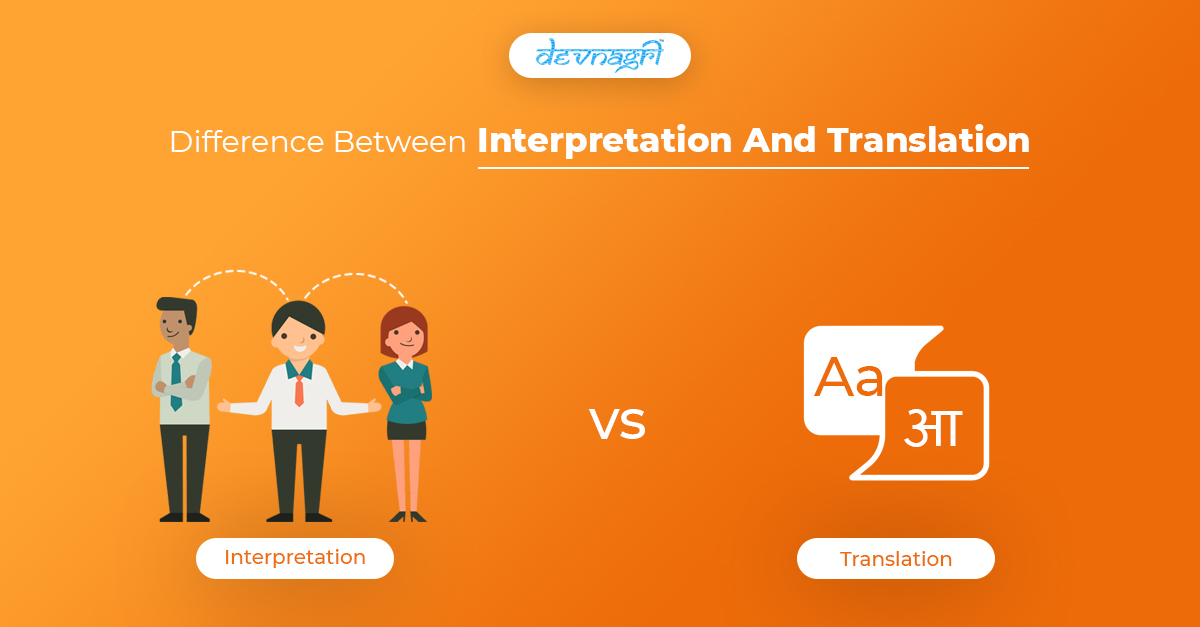
[:en]The major difference between interpretation and translation may be found in the media used and the skill level required for each service: Interpreters convert spoken language into audible form, while translators translate written language into audible form. Both need a profound cultural and language awareness, subject matter expertise and communication ability.
While the words are often used interchangeably, it is important to grasp the differences between these closely linked language areas when selecting the service you need.
Also Read: What is translation?
Interpretation
Interpretation is a service that is provided in the present. It is given live in synchrony with (simultaneous) or directly after (consecutive) the original speech, without assistance from scripts, dictionaries, or other reference materials. Professional interpreters must transpose the source language (language to be translated) within context, retaining the original meaning while rephrasing idioms, colloquialisms, and other culturally unique allusions in ways that the target audience may comprehend. The only resources available to an interpreter are expertise, a strong memory, and fast reactions.
Conferences and meetings, medical visits, judicial processes, live TV coverage, and sign language are among the real-time projects that interpreters work on.
Also Read: What is Localization? Why Your Business Needs Localization?
Translation
The most significant difference between interpretation and translation is that most professional translators work using computer-aided equipment. This entails translating the source material into an easy-to-work-with file format (usually RTF), applying a translation memory (TM) to the text to automatically translate whatever the tool has already translated, and filling in the gaps from fresh.
To guarantee the quality, the translator may use glossaries and translation style guide templates to go through each part of the text. Finally, they will have another linguist review the translation before converting the finished written document back into its original format to ensure the best possible fit.
Translators work on any written information: websites, paper, video subtitles, software, and multimedia.
As a result, the differences between translation and interpretation are significant. To summarize, the following are the five major differences to consider when deciding which service is most suited to a project.
Also Read: What is Voiceover Translation? Benefits Of Voiceover Translation?
There are five main distinctions between interpretation and translation
The Format of translation and interpretation
While interpretation deals with spoken language in real-time, translation services are text-based.
Delivery
On-the-spot interpretation takes time to occur. The procedure may be carried out in person, over the phone, or through video. Translation, on the other hand, may occur after the original text has been produced. This allows translators plenty of time to use technology and reference materials to produce accurate, high-quality translations.
Translation and Interpretation Accuracy
Interpretation requires a somewhat lower degree of precision than translating. Interpreters strive for perfection, but it is not easy to accomplish in a live setting—for example, part of the original speech may be left out of the target language. Again, time is on the side of translators when examining and revising written material for correctness.
Direction
Interpreters must be proficient in both the source and destination languages since they must interpret in both directions instantly without reference materials. Professional translators usually only operate in one direction: into their native language.
Intangibles
Both interpreters and translators confront the difficulty of making metaphors, analogies, and idioms connect with the intended audience. In addition, interpreters must capture the tone, inflexions, voice quality, and other distinguishing features of the spoken word and communicate these verbal signals to the audience.
Now that you understand the difference between translation and interpretation, you may investigate more particular translation services requirements: Do you need to translate highly technical material or content addressing a specific topic? Although interpreters and translators have many of the same abilities, a language services provider can match your requirements with experts who have the right skills and expertise for the job.[:]





